We’re all playing in the same band
There’s enough guitars for you and me
Stand beside your brother and take his hand
Seems the times are changing finallyWe’re all playing in the same band
Sing the song together and you’ll see
Let them know forever just where you stand
People must be learning finallyAnd we’re all playing in the same band
We’re all playing in the same band
We’re all playing in the same band ( Bert Sommer )
He came from the boondocks of rural Kentucky. He could barely read or write. Evidently a man without pedigree to fall back on. He was even ridiculed a bit for being small and scrawny. He was a simple man, who nonetheless was gifted with a very complex mind. While academics and intellectuals could discuss and arrive at solutions on how to fit a camel through the eye of a needle, this man almost inarticulate at the time, had one idea of more practical and far reaching consequences…
“The article, titled “The weirdest people in the world?”, appears in the current issue of the journal Brain and Behavioral Sciences. Dr. Henrich and co-authors Steven Heine and Ara Norenzayan argue that life-long members of societies that are Western, educated, industrialized, rich, democratic — people who are WEIRD — see the world in ways that are alien from the rest of the human family. “If you’re a Westerner, your intuitions about human psychology are probably wrong or at least there’s good reason to believe they’re wrong,” Dr. Henrich says.
Its difficult to comprehend the mindset reared in the values of the white male patriarchal society. The bourgeois values that tango around what Charles Dickens termed “the purity of the middle class” ; it is difficult to understand at its source, whether through an ethnocentric survival instinct or merely contradictions and incoherencies within a self-proclaimed and adhered to genetic structure, where morality is often the antithesis to the stated objective. Take for example “The Ultimatum Game” It works like this: You are given $100 and asked to share it with someone else. You can offer that person any amount and if he accepts the offer, you each get to keep your share. If he rejects your offer, you both walk away empty-handed.
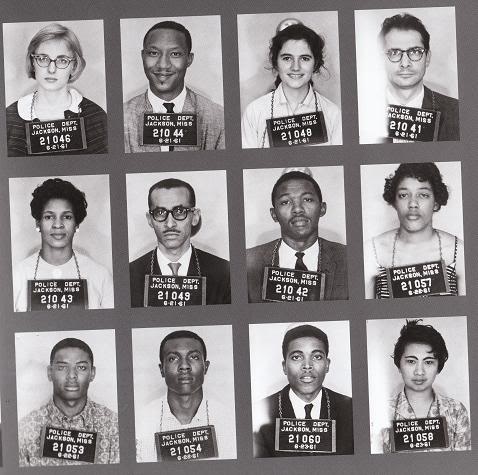
" I think the first Freedom Rider is a young African American man marked "Police Dept. Jackson Miss. 20877 5-2461". When I look at the faces of these Freedom Riders, what amazes me is how young and how ordinary these people look. They seem like people I'd meet on the street. The book Breach of Peace: Portraits of the 1961 Mississippi Freedom Riders gives a description of the make up of the Freedom Riders. It is estimated that almost 450 riders participated in one or more Freedom Rides. About 75% were male. Forty percent were between the ages of eighteen and twenty-one; seventy- five percent were between eighteen and thirty. They came from thirty-nine states, with fifty-four coming from New York and seventy-eight coming from California. Clergymen, like Yale University chaplain William Sloane Coffin and 15 Episcopal priests from the The Episcopal Society for Cultural and Racial Unity, participated in the Freedom Rides. Overall, half of the Riders were black, half white."
How much would you offer? If it’s close to half the amount, you’re a typical white middle-class North American. Studies show educated Americans will make an average offer of $48, whether in the interest of fairness or in the knowledge that too low an offer to their counterpart could be rejected as unfair. If you’re on the other side of the table, you’re likely to reject offers right up to $40.
It seems most of humanity would play the game differently. Joseph Henrich of the University of British Columbia took the Ultimatum Game into the Peruvian Amazon as part of his work on understanding human co-operation in the mid-1990s and found that the Machiguenga considered the idea of offering half your money downright weird — and rejecting an insultingly low offer even weirder.

"Rabbi Heschel is one my favorite authors. The picture above shows the white haired Heschel at Selma with Martin Luther King Jr, John Lewis, Ralph Abernathy, and Ralph Bunche (reprinted from Susannah Heschel’s collection on the Dartmouth College website). One of the dozen or so quotes on my favorite quotations page is from the rabbi who was an activist a generation ago although the quote relates to religious ritual, symbol and
rather than activism … “all conception is symbolization,” sayeth the rabbi."“I was inclined to believe that rejection in the Ultimatum Game would be widespread. With the Machiguenga, they felt rejecting was absurd, which is really what economists think about rejection,” Dr. Henrich says. “It’s completely irrational to turn down free money. Why would you do that?” The authors seriously question whether we can know anything about humanity in general if we only study a “truly unusual group of people” — the privileged products of Western industrial societies, who unfortunately, make up the vast majority of behavioural science test subjects. Most of Western behavioral theories are based on small samples which tend to conform and confirm established behavioral norms.
Clever eh? Like a thick and high stone wall in a medieval castle, encircled by a large moat filled with flesh-ripping creatures. Babylon is well protected, but such measures also indicate its vulnerabilities and fears. We don’t have far to look for examples. A little more than sixty years ago, there was not an African American allowed to play professional baseball. Things well, “it is what it is”, but as the best laid plans can often be laid to waste, there often is someone who looks over that castle wall, stares from the comfort of the parapet, and decides it would be kinda nice if we “could all play in the same band”.
…He just kept trotting out on to the field, back arched, eyes steady, killing teams with his bat and speed and glove, which flicked at line drives with the quickness of a viper’s lash. Your teammates, guys like Eddie Stanky, told you: “Don’t worry, cap. We’ll take off that nigger boy for you. He won’t stand a chance in this clubhouse. Not here, not with us around.” They circulated a petition to keep Jackie Robinson off the team, but you refused to sign it. You don’t know why; you just didn’t. Before spring training, reporters asked if you were worried about the black boy, Robinson, taking your job. You told them: “Well, if he’s man enough to win the position, he can have it.”
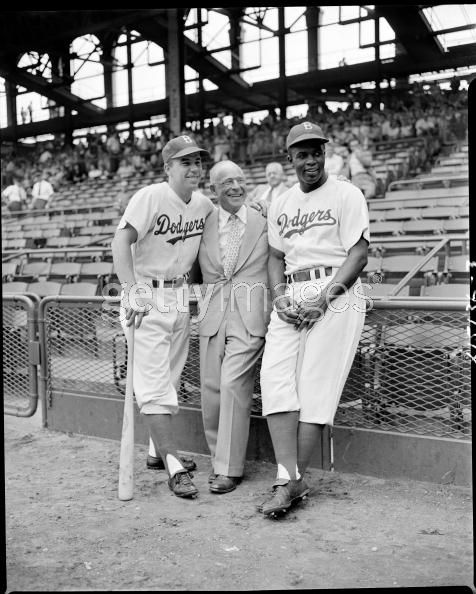
"American professional baseball players Pee Wee Reese (1918 - 1999) (left) and Jackie Robinson (1919 - 1972) (right), who famously broke the Major League Baseball color barrier in 1947, pose for a photograph with Columbia Records president Edward Wallerstein (1891 - 1970) at Ebbets Field before a game, Brooklyn, New York, August 23, 1949. (Photo by CBS Photo Archive/Getty Images)"
You have all heard of the African Personality; of African democracy, of the African way to socialism, of negritude, and so on. They are all props we have fashioned at different times to help us get on our feet again. Once we are up we shan’t need any of them any more. But for the moment it is in the nature of things that we may need to counter racism with what Jean-Paul Sartre has called an anti-racist racism, to announce not just that we are as good as the next man but that we are much better.
—Chinua Achebe
A little over two weeks ago, Pee Wee Reese would have turned 92. He played in Brooklyn which was as strange and faraway as the one-horse, two-dog white cracker towns where he learned to play the world’s greatest game, the game of baseball. He was born in Ekrin, KY., which was segregated and where there were no jews or Hispanics or Italians, let alone negroes. Of course there were hundreds of thousands in Brooklyn, a place that seemd to catch whoever fell fastest to the bottom, and who gathered on Saturday afternoon at Ebbet’s Field to watch the Dodgers, the poor cousins to McGraw’s Giants and the damn Yankees…..
After analyzing reams of data from earlier studies,… found that WEIRD people reacted differently from others in experiment after experiment involving measures of fairness, anti-social punishment and co-operation, as well as visual illusions and questions of individualism and conformity.
“Moreover, WEIRD people do not simply react to the world differently, according to the paper, they perceive it differently to begin with. Take the well-known Muller-Lyer optical illusion, which uses arrows to trick the viewer into thinking one line is longer than another, even if both are the same length. “No matter how many times you measure those lines, you can’t cause yourself to see them as the same length,” Dr. Henrich says. At least that’s true for a Westerner. For some hunter-gatherers, the Muller-Lyer lines do not cause an illusion. “You do this with foragers in the Kalahari [Desert] and they just see the lines as the same length.”
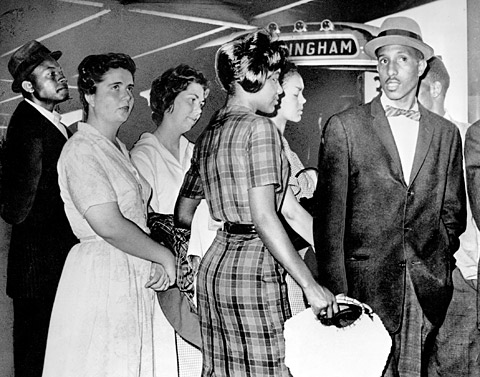
"A group of Freedom Riders from Tennessee stands at the door of a Greyhound bus in Birmingham, Ala., waiting for a bus to leave for Montgomery on May 19, 1961. On April 25, 2008 the Tennessee Board of Regents changed its decision to deny honorary degrees to 14 students at Tennessee State University, who were expelled for participating in Freedom Rides of the 1960s civil rights movement. AP Photo/The Tennessean file.Robert Kennedy believed that everyone had the power to make a difference in the world. Photo by Bill Eppridge//Time Life Pictures/Getty Images. "
WEIRD people,…, have unusual ideas of fairness, are more individualistic and less conformist than other people. In many of these respects, Americans are the most “extreme” Westerners, especially young ones. And educated Americans are even more extremely WEIRD than uneducated ones. “The fact that WEIRD people are the outliers in so many key domains of the behavioral sciences may render them one of the worst subpopulations one could study for generalizing about Homo sapiens,” the authors conclude.” ( Adam McDowell )
…Reese was small. And everyone had told him that he’d never get out of the backwoods of Kentucky, not with a build like his: small lemur’s arms, pomegranate skull and little bulldog legs that only carried you so far as your heart allowed. But you can’t measure a man’s heart, not really, and there was no accounting for, in fact a gosh-darn plain mystery to many why he’d made it to the majors when far bigger trees,country bumpkins, stayed home on the farm, resigned to smoking a corn-cob pipe on the front porch, oiling their shotgun, and listening to the games on the radio, never knowing what he knew: How, in this impossible inner-city purgatory of Brooklyn, which smelled like fish and garbage and cigar smoke, people somehow found it in themselves to cheer for each other, and for Reese, even though he’d grown up around men for whom Jews were the devil and Negroes were one step removed from the jungle. The wops, man.. they were worse than vermin, an ambulant disease. And they were everywhere. Unavoidable.
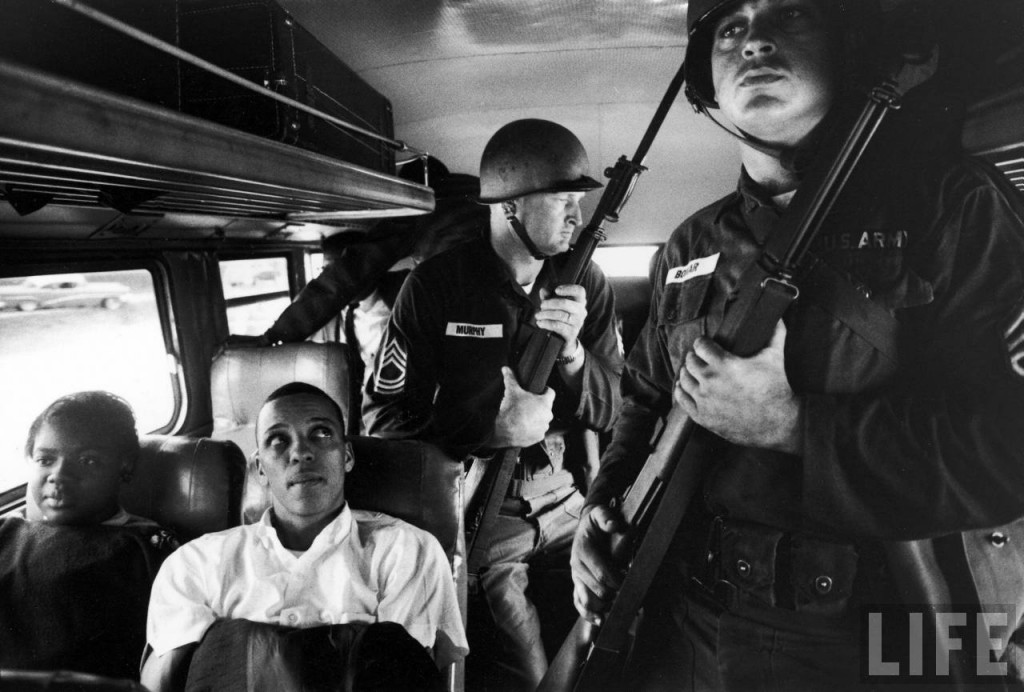
"But we refuse to believe that the bank of justice is bankrupt. We refuse to believe that there are insufficient funds in the great vaults of opportunity of this nation. And so, we've come to cash this check, a check that will give us upon demand the riches of freedom and the security of justice. We have also come to this hallowed spot to remind America of the fierce urgency of Now. This is no time to engage in the luxury of cooling off or to take the tranquilizing drug of gradualism. Now is the time to make real the promises of democracy. Now is the time to rise from the dark and desolate valley of segregation to the sunlit path of racial justice. Now is the time to lift our nation from the quicksands of racial injustice to the solid rock of brotherhood. Now is the time to make justice a reality for all of God's children."
April C.E. Langley is almost what you could call a literary anthropologist. And when you dig, and that extraction with pick and hoe, was ultimately only skin deep; there wasn’t a heck of difference:
As a result, when I later encountered Fyodor Dostoyevsky’s Notes from the Underground, I could not help but notice how much it reminded me of Ralph Ellison’s Invisible Man. When I read William Faulkner’s As I Lay Dying, I thought immediately of Toni Morrison’s The Bluest Eye. It was the way Morrison just let her characters be and how, because of what seemed to me at the time a more natural or realistic way of narrating things, her characters interconnected while separate histories unfolded, and each from a different character’s point of view. This way of inviting a reader into the lives of each character from different vantage points was the quality I thought made Faulkner’s writing seem so like Morrison’s.
When I read Mark Twain’s The Tragedy of Pudd’nhead Wilson, I couldn’t help but notice that the voices of Tom, Chambers, and Roz echoed an ironic humor that seemed similar to the sentiments of a character with which I was most familiar—Langston Hughes’s Jess B. Simple. It mattered not that the white canonical texts preceded the black ones. To my mind I could only wonder in amazement at how these white writers managed to capture what I would later understand as a black aesthetic. The more I read these canonical white and black texts and the more comparisons I made between them and many others, the more I began to realize that my earliest experience of literature had not been a conventional one. Years later, an English professor would refer to this way of reading and understanding literature as backing into the canon.”
…And then, in Cincinnati, on the first road trip in the first year a black man had ever plied his trade in the major leagues, the crowd stood and cried for blood. They shouted the worst things, things you could never repeat. They would have torched him right there had they got their hands on him. They would have wrestled him away from the sanctuary of the park and strung him up as they’d done to so many other poor black boys, boys who never got to play baseball, go to the movies, fall in love, or live through the greatest event in American sporting history. But they didn’t get him, because, on that horrid Midwestern evening, just before the game started and with the crowd screaming, you went over to your teammate and you put your arm around him, right there on the field. These people — men and women of Ohio, around whom you’d lived all of your life — curdled in horror. And then the game started.
“If WEIRD people are indeed weird, it is the Enlightenment and the Industrial Revolution that have made them so. In the example of the Muller-Lyer illusion, the UBC team hypothesizes that growing up in an industrial-era environment with plenty of 90-degree lines and carpentered edges led to WEIRD people’s sense of vision being susceptible to the deception.
“We live in this world with police and institutions and pre-packaged food, TV, the Internet, watches and clocks and calendars. Our heads are loaded with all this information for navigating those environments. So we should expect our brains to be distorted,” Dr. Henrich says. North American behavioural scientists were aware of the issues raised by the paper. “It confirms something that many researchers knew all along but didn’t want to admit or acknowledge because its implications are so troublesome,” says Dr. Haidt of the University of Virginia, who was on a panel of academics who reviewed the article before publication.”
A very belated happy birthday,to you Pee Wee Reese. In that famous year, 1947, you hit .284 and had 104 walks, your best total ever. Many years later, when you walked off the field for the final time, the last thing anyone saw was the cotton number on the back of your blue-and- white uniform, which got swallowed up by everlasting darkness as you disappeared up the long stadium tunnel. It was a good number; the only number a man like you could have worn: One.
From Russell Smith :
Racist language evolves like every other kind. Modern racists have the added pressure of being forced to use code words, to avoid being obvious and unpopular, and so their language is perhaps mutating at an accelerated pace. …
“ The miasma of racist name-calling is a deep, dark, confusing and inescapable one”
There’s a bright side, an optimist might say, to changes in distasteful language: Sometimes it shifts the other way, from hateful to silly. As the neutral word Asian has come to take on, in fascist parlance, a negative connotation, so inversely do some hateful racist terms become diluted.

INTERNET sensation Clare Werbeloff, famed for her flamboyant eyewitness account of a Kings Cross shooting, has admitted she fabricated the story. The 19-year-old has told investigating police that she "made the whole thing up" in reference to a shooting in Kings Cross last Sunday.
The most recent example of this came from last year’s best actress, YouTube one-hit wonder Clare Werbeloff, also known as Clare the King’s Cross Bogan. In case you missed this troubling piece of improvisation on Australian TV news (and subsequently all over the Web), this 19-year-old model/actress was interviewed by a TV crew moments after a shooting in the red-light district of Sydney. She claimed to have seen it all happen, and famously described the altercation as being between “a fat wog and a skinny wog.” She then went on to imitate the accents of the quarrelers as she recounted their exchange: “Oi bru, you slept with my cousin, eh? And the other one goes, ‘No man I didn’t for shit eh?’ The other one goes, ‘I will call on my fully sick boys!’ And then they pulled out a gun, and just went chk-chk, boom!”
She became famous largely because her story was entirely made up, and because her impersonations were so colourful, but also because her use of a notorious racist term shocked the rest of the world. Australian commentators had to explain – and argue and argue about – what she meant by “wog.” It turns out that in Australia the word doesn’t mean dark-skinned person, but a person of Eastern or Southern European descent – it means Romanians, Balkans, Turks, Greeks and Middle-Easterners. And it is commonly used there, even in TV comedy, and even by self-parodying European immigrants themselves (google Australian videos with the word in it and you’ll see what I mean). Werbeloff herself insisted there was nothing racist about it.
That doesn’t make the word any less offensive here, of course, or even in Australia, where many people were still disgusted by it, but the general public seemed to shruggingly accept that, offensive as it may be, it’s less offensive when used toward white people, and at any rate it has entered everyday vocabulary and probably cannot be eliminated at this point.
Paradoxically, Werbeloff’s most furious detractors made a point of calling her a bogan – Australian slang for brash working-class person, similar to the British chav. This is a classist term, which is undoubtedly hurtful too. And, predictably, anonymous YouTube scribes triumphantly point out that her name is Jewish, too, proving that the miasma of racist name-calling is a deep, dark, confusing and inescapable one, a sort of shifting fog that we all hope to avoid falling into.




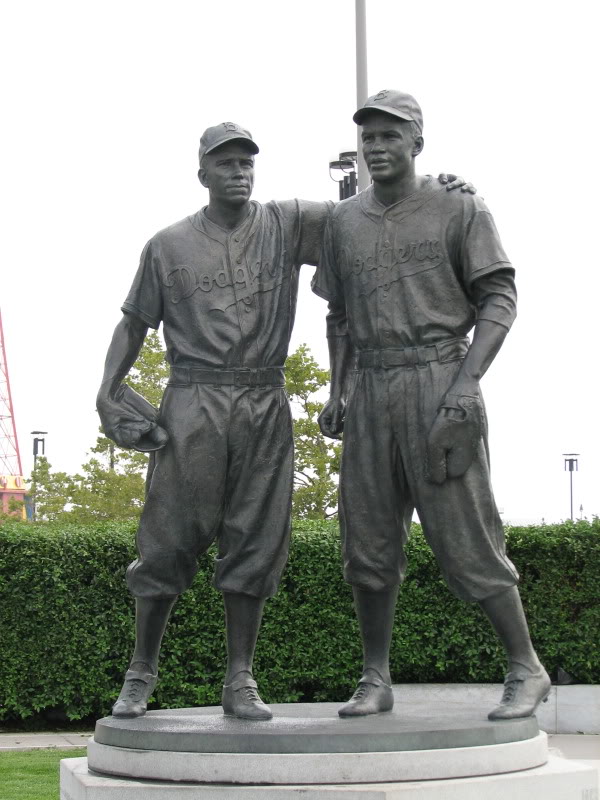



 COMMENTS
COMMENTS